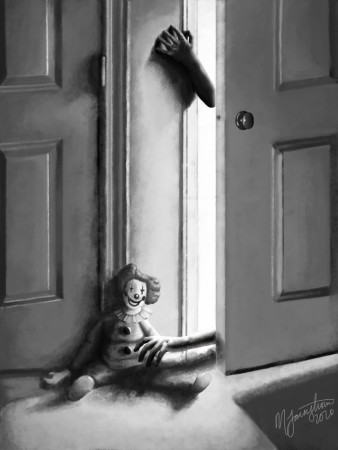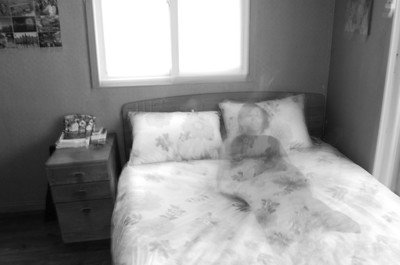The Mysterious History of the Poltergeist
Poltergeists are often connected with ghosts, and while it’s true that ghosts can be poltergeists, poltergeists are not always ghosts. Categorized by their noisy nature, their ability to move objects, as well as various other physical disturbances. The term poltergeist comes from the German language, poltern, “to knock,” and geist, “spirit,” and in England the poltergeist is often synonymous with the boggart. These mischievous and often malevolent spirits date back to ancient Rome, as well as medieval Germany, China, Wales, and they continue to be reported from elsewhere in the world to this day. These impish spirits have not changed much over the year in how they present, except for taking into account the evolution of technology. In ancient reports, the reports showed that would throw rocks, dirt, and other objects, cause loud noises, knocking, strange lights, and unexplainable shrieks, as well as physical and sexual assaults that would leave their victims shaken. Modern reports have included lightbulbs spinning in their sockets and telephones repeatedly dialing the same number.
Physical assaults—scratching, spitting, biting, pinching, punching and sexual molestation—usually only appear in a small number of cases, but they are still consistently prevalent among cases over the years. Overall, the activity doesn’t just peter out, it stops as suddenly as it starts, but the length of time the victims are affected varies so widely that the end is never predictable. Whether the victim ends up suffering for a few hours, a few months, or a few years, it is never a permanent affliction. One intriguing aspect of poltergeist infestations is the fact that the activity is usually centralized around a single individual, or “agent”.
Researching the Poltergeist Phenomenon
The phenomenon of poltergeists has been researched in-depth at a scientific level since the late 1970s by parapsychologists and they have come up with several theories as possible explanations. Alan Gauld and A.D. Cornell, English researchers of the time collected the data from 500 separate instances of poltergeists dating back from the 1800s. Among the characteristics that these cases had in common, about two-thirds of all cases included small objects moving from their original location. Over half of the cases showed that the poltergeists were most active at night, and many individual incidents lasted longer than a year. Some other disturbing coincidences were that quite a few cases were focused around females under the age of twenty.
Before the 19th century, poltergeist activity was blamed primarily on the paranormal—spirits, witches, demons, and most often the Devil. At the turn of the century, however, a large spiritualism movement began, where mediums would routinely allow themselves to become temporarily possessed as a conduit to those who have passed. There were several researchers who began to investigate the idea of unconscious psychokinesis, alluding to the idea that the individual that the activity centralized around, was, in fact, the cause of it all. This isn’t to say that they were being accused of faking the activity, but more likely causing it without their own knowledge and although this theory began to be explored in the 1930s, it is still considered fairly controversial in nature. It’s important to take into consideration that the majority of these reports were recorded between 1840 and 1920 before the phenomenon came under the scrutiny of modern scientific research.
Poltergeists in History and Modern Culture
The Amityville Haunting
Ron DeFeo Jr., the infamous murderer of Amityville still lives and he continues to serve his six 25-year life sentences in the New York Correctional Facility; his initial story consisted of him claiming to hear voices that were convincing him to kill his entire family, but then his story changed, multiple times since. While DeFeo now claims that he didn’t murder his entire family, the details have gotten so fuzzy over the years that it’s still incredibly difficult to tell if this was an actual case of possession—which later resulted in poltergeist activity for the Lutz family—or if the entire thing was a hoax propagated by the Lutz family. It’s widely theorized by skeptics that the Lutz family intended to cash-in on the mass murder committed by DeFeo, due to a problematic financial and legal condition so they could take advantage of the publicity. It makes sense to take the view of the skeptic, it’s never a good idea to accept anything on blind faith, but much of the evidence and first-hand accounts disagree with the skeptic’s point of view.
Why do we believe them? Well, even though it’s been proven that lie detector tests are not infallible, George and Kathy Lutz weren’t trained to pass them, yet they did so to prove their innocence and ended up passing. There are also claims that George Lutz had a history of dabbling in the occult, we’re not so sure where we fall on this matter—this could mean that either Lutz was incredibly familiar with the symptoms of a poltergeist haunting, or it means that he was more open psychologically to the idea and the poltergeist took hold. The entire family apparently experienced foreign odors, cold spots in certain areas of the house, and reported a slime that would randomly ooze out of the walls and keyholes. One tidbit that could be an embellishment, was the allegation that George Lutz would wake up at 3:15 AM every morning, which was when Ron DeFeo Jr. was said to have committed the murders.
Aside from observers from outside of the Lutz family, there was the priest that was called in to bless the home, who reported having heard a voice scream to, “get out!” Due to his own personal experience, he advised the family to never sleep in that room again. The paranormal activity within the house only increased from there, with a garage door opening and closing, as well as a knife being knocked down in the kitchen by invisible forces. This all escalated even further to every member of the family except for George, who observed the phenomenon, levitating off of their respective beds. Daniel Lutz, one of the sons continues to have nightmares about this house even to this day.
The Truth Behind Amityville?
The following video addresses both skeptics and believers when it comes to the Amityville haunting, so why not hear both sides?
The Ash Manor Haunting
Investigated in 1936, Dr. Nandor Fodor became incredibly popular for his controversial poltergeist theory about the Ash Manor Ghost. The actual case reports that shortly after moving into the old house, the owner, Mr. Keel and his wife began to encounter a strange apparition dressed in an Elizabethan era smock—as well as hear strange loud knocking—upon trying to confront this intruder, Mr. and Mrs. Keel found that trying to touch the apparition that their hands would go right through it. Fearing the worst for his family, Keel hired a medium, as well as various psychic investigators. This resulted in the medium suggesting that all of these happenings were the result of strained family life, a tell-tale sign of poltergeist activity. The final result of Dr. Fodor was that people, “who put themselves in an unguarded psychological position,” are likely to be more vulnerable to hauntings and poltergeist attacks.
The Enfield Haunting
In the book, This House is Haunted (2011), the account of the Enfield Haunting is given in full, which also inspired The Conjuring 2 (2016), part of the great paranormal franchise that follows the investigations of Ed and Lorraine Warren throughout the years. The Enfield case is possibly one of the most famous poltergeist hauntings ever recorded. Originating late August of 1977, in the suburb of North London, the house in Enfield was inhabited by a single mother and her four children; the initial report was of the two middle children experiencing their beds shaking violently, and shuffling sounds when the children were in their shared room. At that point, the mother Peggy, was not entirely convinced that it was actually happening.
Peggy and her two middle children were all witness to when sudden furniture movements and loud knocking with no origin began, at which time Peggy sought the help of her neighbors. Once her neighbors witnessed the knocking but had no explanation for it, the police were called in. The police were even hard-pressed to find an explanation behind the knocking and furniture movement that they ended up witnessing upon responding to the call. The Enfield case eventually subsided for a time, before being reignited a short while later lasting for a few years in total.
Films that feature poltergeists
- The Haunting (1963)
- The Amityville Horror (1979)
- Poltergeist (1982)
- The Entity (1982)
- Poltergeist II: The Other Side (1986)
- The Amityville Horror (2005)
- Paranormal Activity (2007)
- Grave Encounters (2011)
- When the Lights Went Out (2012)
- The Conjuring 2 (2016)

Georgia-based author and artist, Mary has been a horror aficionado since the mid-2000s. Originally a hobby artist and writer, she found her niche in the horror industry in late 2019 and hasn’t looked back since. Mary’s evolution into a horror expert allowed her to express herself truly for the first time in her life. Now, she prides herself on indulging in the stuff of nightmares.
Mary also moonlights as a content creator across multiple social media platforms—breaking down horror tropes on YouTube, as well as playing horror games and broadcasting live digital art sessions on Twitch.


